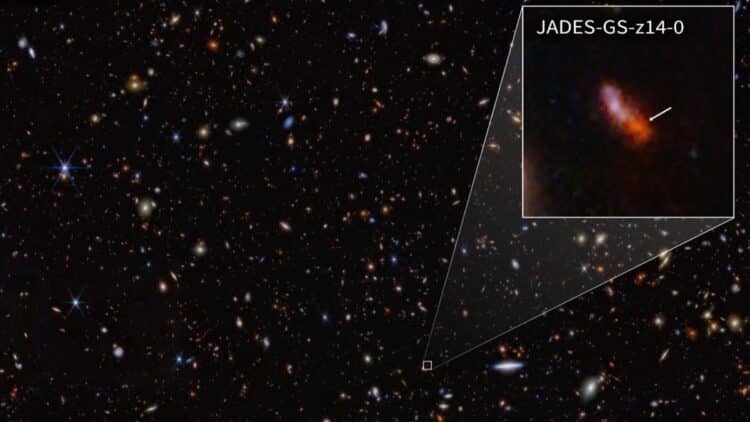You know that person who is really good at something, almost a legend, and just when you think they’ve reached their potential, they come along and surprise you? Well, that’s basically what the James Webb Telescope just did. Even though it’s not a person, but rather a tool, since its creation in 2021, it has been making increasingly incredible discoveries. This latest revelation is almost unimaginable, because it’s something that came into existence just 280 million years after the Big Bang.
Scientists’ greatest desire: to understand how the universe was organized
If you ask an astronomer what his main goal is, or rather, what his desire is, he will most likely tell you that it is to understand how the universe was organized in its first million years. This is because we already know that, after the Big Bang, the universe went through a period of accelerated expansion and cooling until the first atoms began to group together, forming stars and galaxies. But what happened next? And what is behind this?
In fact, for a long time, scientists believed that this process took hundreds of millions of years. Several theoretical models predicted that the first galaxies could only have emerged after 500 or 600 million years. Until the James Webb telescope came along and changed many of the things we believed until then. This latest discovery found something that, until a few years ago, would have been considered impossible.
The unimaginable discovery of James Webb
Remember when we said that galaxies were believed to have only formed 500 or 600 million years after the Big Bang? Well, in May 2025, the James Webb Telescope discovered a galaxy that formed just 280 million years after the Big Bang. This discovery is so incredible that Pieter van Dokkum, professor of Astronomy and Physics at Yale University, comments:
“This galaxy existed when the universe was about 280 million years old—we’re getting quite close to the Big Bang. Just to put that in context, sharks have been around on Earth for a longer timespan!”
This galaxy has already been named MoM-z14, an acronym for “Mother of all early galaxies”. Why? Well, it was observed with a redshift of z = 14.44, the highest ever recorded, and even though it is a relatively compact galaxy, it is very luminous, suggesting an intense phase of star formation.
As if the surprises weren’t over yet, MoM-z14 has high levels of nitrogen in relation to carbon, which is similar to what we observe in the globular clusters of the Milky Way. In other words, perhaps this star formation was already complex and advanced much earlier than previously thought (surprising everyone, just like this galaxy, which, according to NASA, was not formed with the others).
What does this discovery mean for us?
In addition to the discovery of MoM-z14 being a record, it directly challenges theories about galaxy formation. This is because we had never thought that such bright galaxies could exist at such an early stage in the universe. It even surprised the James Webb Telescope mission, because the scientists involved in it were expecting to find only faint traces or simple clusters at this time.
“The bigger picture here is that JWST wasn’t supposed to discover any galaxies this early in the universe’s history at least, or at least at this point in the mission”, explains van Dokkum
That’s why now, going beyond anything previously thought, more than 100 galaxies similar to MoM-z14 have been identified in the first 400 million years after the Big Bang – and this number grows with each new analysis of James Webb’s data, see? An example of this was when the JWST visited the Question Mark Galaxy and found something historic.


